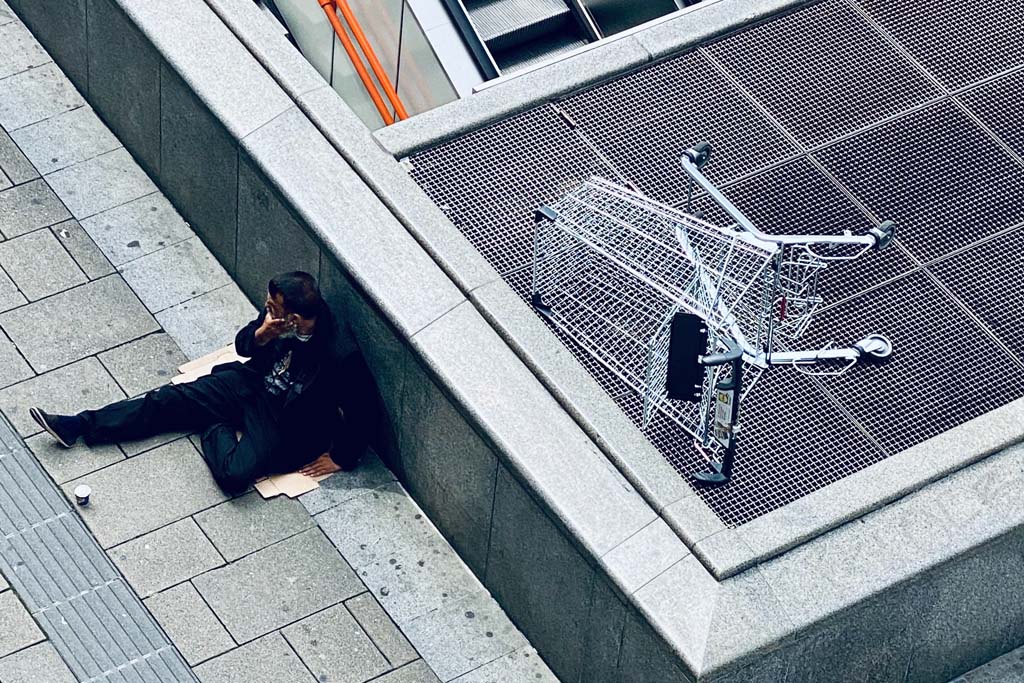
The US and China have a problem shared by both, and by the rest of the world, although they suffer it more acutely: that of burgeoning inequality at the heart of their societies, despite the growth of their economies over the past 20 years. Combatting this and bolstering the welfare of the middle classes are priorities for both Joe Biden and Xi Jinping. They know that their political futures are at stake, the former in a democracy where votes matter, the latter in a dictatorship where public opinion matters, even if it is not made public. One says he defends the middle classes, the other advocates ‘common prosperity’. But the consequences of their policies are pitting them against each other, although both seek to remove power and levy more taxes on big tech firms, in what has become an increasingly political matter in both countries (although Silicon Valley is predominantly allied to the Democrats).
For Biden, the fight against inequality involves, among other things, the Buy American slogan, with shades of Trump’s America First, and reshoring, the return of jobs that had previously left (although many are being replaced by machines and computers), and the ensuing protectionism, whether explicit or concealed. The Biden Administration advocates trade and investment protectionism (although many US investors do not adhere to it). This is part of his foreign policy for the middle class. A longstanding and basic question, however, is whether the growth of both middle classes, the Chinese and American, and others around the world, can be compatible. It is also what drives geopolitics.
Of the large economies, the US and China are two of the countries after India with the greatest social inequality. The most commonly used measurement is the Gini index, where a value of 0 represents total equality and 1 absolute inequality. The US scores around 0.41, China 0.47, whereas the EU is more egalitarian at 0.38 and the OECD average is at about 0.35. The Chinese situation is made worse by its ageing population and its class structure, with a society taking the form of an inverted pyramid.
Xi Jinping has launched a slogan –and policy– of ‘common prosperity’, ahead of the 20th congress of the Communist Party where he will be seeking re-election in the autumn of 2022 –possibly for life–, thereby breaking hitherto observed rules placing time limits on the top job. In the background lies the idea of increased taxes, greater contributions from high-income citizens, higher spending on social programmes and education, stricter application of measures against large private monopolies and more egalitarian access to new technologies, which are being given unconditional support. Although it does not mean a notable expansion of the Chinese welfare state or the nationalisation of companies, it does entail a new phase in the Chinese economic system, whether this is known as ‘state capitalism’ or ‘socialism with Chinese characteristics.’
This campaign has various practical consequences: to begin with, less tolerance of the super-rich, something already evident with Jack Ma at Alibaba and Ant and others. The possibility of large companies shedding market value in the process seems to matter little to the Chinese President. He takes a more social approach to housing, puncturing the speculation underlying the crisis suffered by the property giant Evergrande; however, it is still unclear how this situation can unfold is such a way as to avoid what happened in the US and other countries, including Spain, in 2008. And, above all, he seeks to broaden and strengthen the middle classes (currently numbering some 400 million, with the goal of increasing this to 800 million by 2035), which is not so different from Biden’s basic proposition.
As noted by that close China-watcher Kevin Rudd, the fact that Xi Jinping is pursuing an increasingly redistributive approach to economic policy means that neither multimillionaires nor housing market speculators are tolerated as they once were. In Xi Jinping’s ideology, all forms of speculative investment, particularly in real estate, are deemed part of the ‘fictitious economy’, which displace investment in the ‘real economy’ of manufacturing, technology and infrastructure, sectors that in Xi’s vision will seal China’s global economic dominance. These basic social considerations also feed into geopolitics and this century’s ongoing struggle for technological primacy between China and the US.
The economist Branko Milanović argues that there are three types of inequality in both countries and elsewhere:
- The concentration of the ownership of private assets (capital, a factor exacerbated by the automation, digitalisation and robotisation of many tasks).
- The creation of an elite that is rich in capital and labour incomes.
- The intergenerational transmission of advantage, through inheritance and education.
On the latter front, the Chinese regime under Xi is cracking down on private education centres and private classes at various levels, including a number of business schools (Jack Ma’s being no exception), although it remains to be seen if he succeeds. There is undoubtedly an underlying element of control and indoctrination. Biden’s ambitious social programme –now cut to US$1.75 trillion and lacking taxes on the super-rich following pressure from the right-wing of his party– includes, if it is passed, a notable extension of free education, an easing of university students’ debt and an increase in the minimum wage for some employees. In both countries meanwhile (as elsewhere) there is a significant income gap between large and dynamic urban centres and more rural settings.
Trump, unlike the Democrats, who are obsessed with their strategy towards minorities, recognised such inequalities, above all among the white working and middle classes, as a trampoline for his election victory in 2016. Biden has realised that combatting them is necessary in order for the Democrats to retain federal power in the mid-term elections in 2022, and in the presidential and legislative elections in 2024.
This fight against inequality, which is also becoming more important in Europe, is part of the shift in the economic and social paradigm that is throwing the equilibrium of the last 40 years into question. In the case of the US and China, despite the coincidences between ‘socialism with Chinese characteristics’ and Biden’s new faltering progressiveness, it fuels their rivalry.


